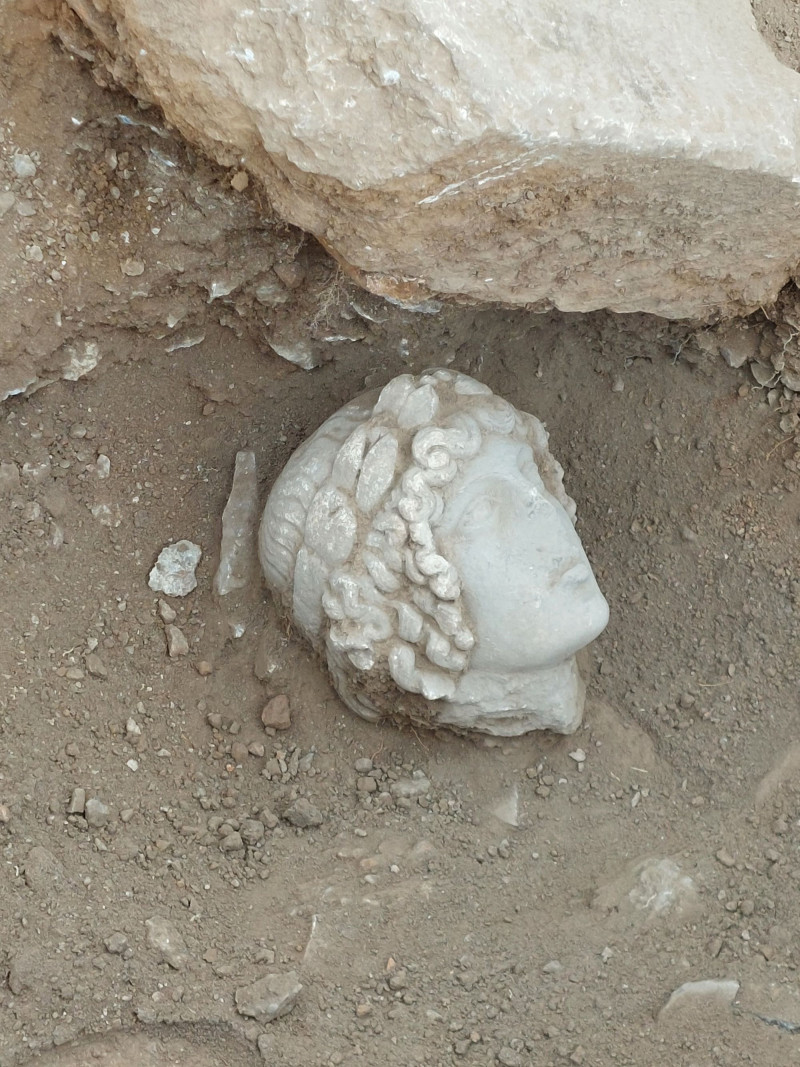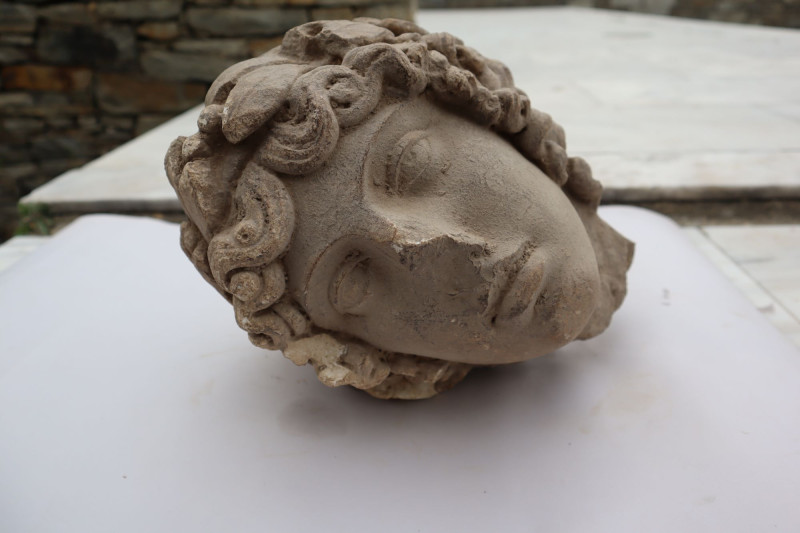This year the excavation continued east of the southern main street (decumanus) at the point where it meets the northern axis of the city (the so-called “Egnatia”)
Impressive and valuable findings were brought to light by the latest excavation research in Philippi, carried out by the Aristotle University team, under the direction of the professor of Byzantine Archeology Natalia Poulos.
This year the excavation continued east of the southern main street (decumanus) at the point where it meets the northern axis of the city (the so-called “Egnatia”).
The continuation of the marble-paved road was revealed, on its surface where a coin (bronze follis) of the emperor Leo VI (886-912) was found, an element that helps to determine the duration of use of the road. At the point of convergence of the two streets, a widening (square) appears to be taking shape, dominated by a richly decorated building.
The data from last year’s excavation led to the hypothesis that it was a fountain, which was confirmed by the findings of this year’s research
The research of 2022 brought to light part of the rich decoration of the fountain, the most impressive of which is the statue depicting Heracles barren with a youthful body. The recent excavation (2023) revealed the head of another statue: it belongs to a bearded male figure with a rich crown surmounted by a wreath of laurel leaves.
This beautiful head seems to belong to a statue of the god Apollo. Like the statue of Herakles, it dates back to the 2nd or early 3rd century. A.D. and probably adorned the fountain, which took its final form during the 8th to 9th centuries.
From the sources and from the archaeological data that in Constantinople, it is known that statues from the classical and Roman period adorned buildings and public spaces until the late Byzantine period.
The excavation will continue next year.
Source :Skai
I am Frederick Tuttle, who works in 247 News Agency as an author and mostly cover entertainment news. I have worked in this industry for 10 years and have gained a lot of experience. I am a very hard worker and always strive to get the best out of my work. I am also very passionate about my work and always try to keep up with the latest news and trends.












